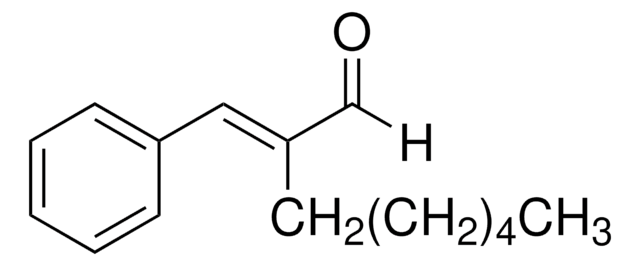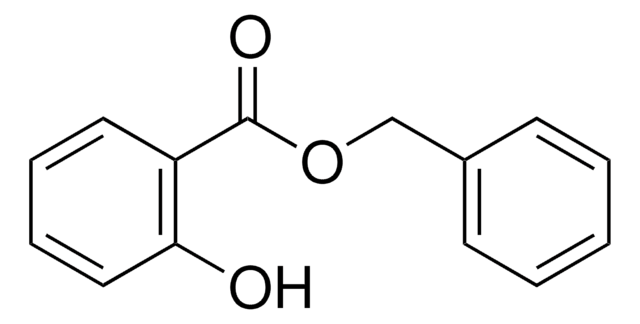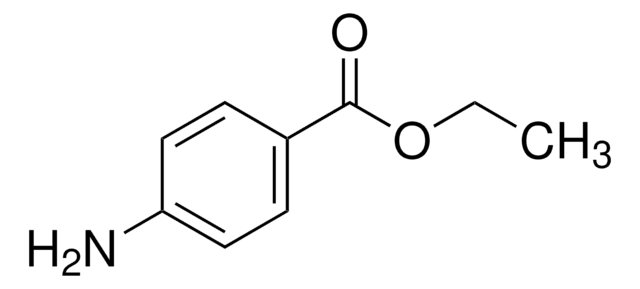Kluczowe dokumenty
234214
Benzyl cinnamate
99%
Synonim(y):
3-Phenyl 2-propenoic acid benzyl ester, Benzyl 3-phenylpropenoate, Cinnamic acid benzyl ester
About This Item
Polecane produkty
Poziom jakości
Próba
99%
Formularz
solid
bp
195-200 °C/5 mmHg (lit.)
mp
34-37 °C (lit.)
rozpuszczalność
alcohol: soluble(lit.)
diethyl ether: soluble(lit.)
glycerol: insoluble (practically)(lit.)
oil: soluble(lit.)
propylene glycol: insoluble (practically)(lit.)
water: insoluble (practically)(lit.)
grupa funkcyjna
ester
phenyl
ciąg SMILES
O=C(OCC1=CC=CC=C1)/C=C/C2=CC=CC=C2
InChI
1S/C16H14O2/c17-16(12-11-14-7-3-1-4-8-14)18-13-15-9-5-2-6-10-15/h1-12H,13H2/b12-11+
Klucz InChI
NGHOLYJTSCBCGC-VAWYXSNFSA-N
Szukasz podobnych produktów? Odwiedź Przewodnik dotyczący porównywania produktów
Powiązane kategorie
Opis ogólny
Zastosowanie
Hasło ostrzegawcze
Warning
Zwroty wskazujące rodzaj zagrożenia
Zwroty wskazujące środki ostrożności
Klasyfikacja zagrożeń
Aquatic Acute 1 - Aquatic Chronic 2 - Skin Sens. 1B
Kod klasy składowania
11 - Combustible Solids
Klasa zagrożenia wodnego (WGK)
WGK 2
Temperatura zapłonu (°F)
356.0 °F - closed cup
Temperatura zapłonu (°C)
180 °C - closed cup
Środki ochrony indywidualnej
Eyeshields, Gloves, type N95 (US)
Wybierz jedną z najnowszych wersji:
Masz już ten produkt?
Dokumenty związane z niedawno zakupionymi produktami zostały zamieszczone w Bibliotece dokumentów.
Klienci oglądali również te produkty
Nasz zespół naukowców ma doświadczenie we wszystkich obszarach badań, w tym w naukach przyrodniczych, materiałoznawstwie, syntezie chemicznej, chromatografii, analityce i wielu innych dziedzinach.
Skontaktuj się z zespołem ds. pomocy technicznej













